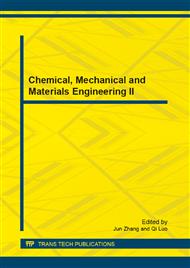[1]
C.Zhao,P.Zhao M.S. Wang,Optimal harvesting for nonlinear age-dependent population dynamics. Mathematical and Computer Modelling. 310-319(2006)43.
DOI: 10.1016/j.mcm.2005.06.008
Google Scholar
[2]
S.Anita,Analysis and Control of Age-Dependent Population Dynamics, Kluwer Academic Publishers. Dordrecht, 2000.
Google Scholar
[3]
J.Wang,K.Wang, Optimality control of harvesting for single population, Appl.Math.Compu. 235-247(2004)156.
Google Scholar
[4]
L.Mi,Q.M. Zhang, Convergence of the Euler Scheme to a Stochastic Competitive Age-structured Population System, Fourth International Conference on Intelligent Computation Technology and Automation, Shenzhen, Guangdong China, 83-86(2011).
DOI: 10.1109/icicta.2011.28
Google Scholar
[5]
Qimin Zhang. The numerical solutions for stochastic age-dependent capital system with Markovian switching[J]. Journal of ecmode.(2010)
Google Scholar
[6]
X.Li,J.Huang, G. Wang, Near-optimal control problems for linear forward-backward stochastic system, Constants Lists available at Science Direct,(2009).
Google Scholar
[7]
K. Bahlali, Necessary and sufficient conditions for near-optimality in Stochastic control of FBSDEs, System Control Letters, 857-864(2009)58.
DOI: 10.1016/j.sysconle.2009.10.005
Google Scholar
[8]
X.Y. Zhou.Stochastic near-optimal controls: Necessary and sufficient conditions for near-optimality, STAM.J. Control Optim.36(3)(1998)917-929.
DOI: 10.1137/s0363012996302664
Google Scholar


